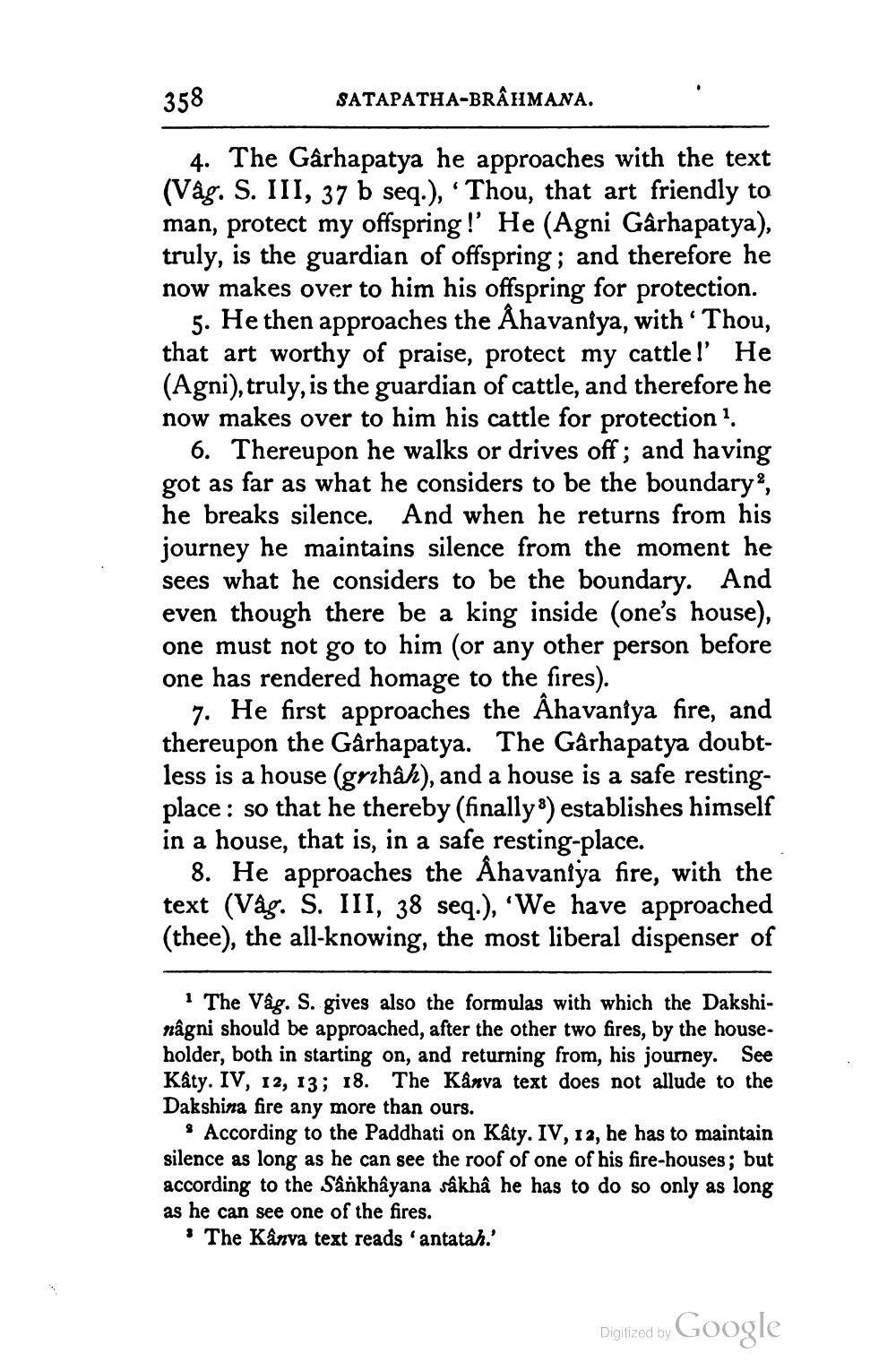________________
358
SATAPATHA-BRAHMANA.
4. The Gârhapatya he approaches with the text (Vâg. S. III, 37 b seq.), 'Thou, that art friendly to man, protect my offspring!' He (Agni Gârhapatya), truly, is the guardian of offspring; and therefore he now makes over to him his offspring for protection.
5. He then approaches the Ahavaniya, with 'Thou, that art worthy of praise, protect my cattle!' He (Agni), truly, is the guardian of cattle, and therefore he now makes over to him his cattle for protection 1.
6. Thereupon he walks or drives off; and having got as far as what he considers to be the boundary, he breaks silence. And when he returns from his journey he maintains silence from the moment he sees what he considers to be the boundary. And even though there be a king inside (one's house), one must not go to him (or any other person before one has rendered homage to the fires).
7. He first approaches the Âhavaniya fire, and thereupon the Gârhapatya. The Gârhapatya doubtless is a house (grzhâh), and a house is a safe restingplace: so that he thereby (finally) establishes himself in a house, that is, in a safe resting-place.
8. He approaches the Âhavaniya fire, with the text (Vâg. S. III, 38 seq.), 'We have approached (thee), the all-knowing, the most liberal dispenser of
1 The Vâg. S. gives also the formulas with which the Dakshinâgni should be approached, after the other two fires, by the householder, both in starting on, and returning from, his journey. See Kâty. IV, 12, 13; 18. The Kanva text does not allude to the Dakshina fire any more than ours.
• According to the Paddhati on Kâty. IV, 12, he has to maintain silence as long as he can see the roof of one of his fire-houses; but according to the Sânkhâyana sâkhâ he has to do so only as long as he can see one of the fires.
The Kânva text reads 'antatah.'
Digitized by
Google




